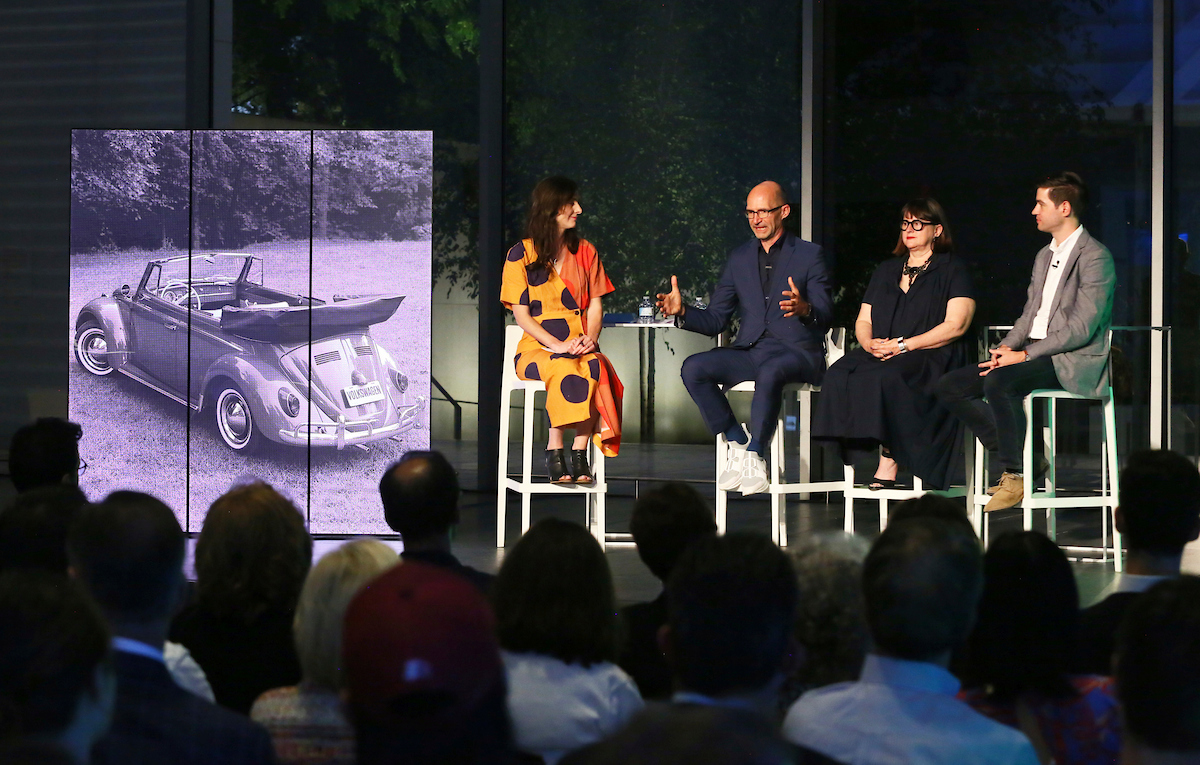
The Museum of Modern Art (MoMA) holds over 200,000 works of art in its collection from around the world that represent the best modern and contemporary art. One of these is a 1959 Volkswagen Beetle, acquired as an example of iconic industrial design and cultural impact. With approximately 21 million Beetle units built, it was one of the best-selling vehicles globally of the 20th century.
With the Beetle’s third generation coming to an end, Volkswagen convened a panel of design experts at MoMA in early June to explore what made the Beetle such a breakthrough, and what lessons it holds for the next revolution in transportation – electric, zero-tailpipe emission mobility.
Led by Tamara Warren, co-host at Cheddar News Network and founder of Le Car, the panel included Volkswagen Head of Design Klaus Bischoff; Rebeccah Pailes-Friedman, professor at Pratt Institute and founder of Interwoven Design; and Paul Galloway, the Collection Specialist in MoMA’s Department of Architecture and Design.

“When the Beetle first arrived here in the U.S., it was a total contradiction to all of the cars on the road at the time,” said Bischoff. “But people fell in love with it. It was like a family member that lived in the garage. It was because of the shape of the car, the design of it, the simplicity.”
The group discussed the cultural significance of the Beetle, transformations in automotive design and the future of auto design. Pailes-Friedman fondly recalled the bud vase in her second generation Beetle, where she always displayed fresh flowers.
And the group weighed how the simplicity of the Beetle and accessibility could be translated into the world of electric vehicles, such as the future ID. Crozz.
“We are now entering a new era of mobility, so we have to recreate mobility again,” Bischoff explained. “We are doing so with the ID. Family, so our aim is not only to deliver mobility, but zero tailpipe emission mobility.”
